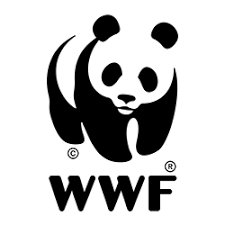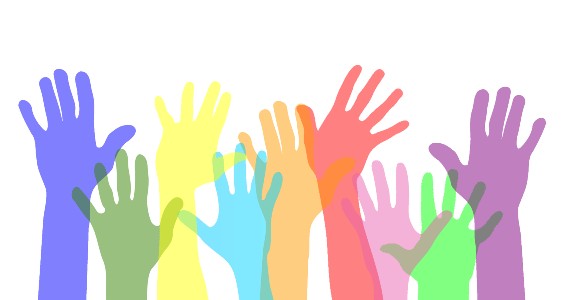Should nations return the indigenous peoples’ natural territories?
A blog post about findings and experiences from my Bachelor project in Economics and Business Administration with the World Wildlife Fund (WWF) as sparring partner.
The mark of people nowadays on nature and wildlife
The climate crisis is one of the main challenges of our time. Although we are aware of the problems we are facing and working at full stretch to solve, it is a fact that there has never before been such a severe pressure on the life of our planet, also known as the biosphere. We humans are highly dependent on balance in the biosphere, as it forms basis for our own existence – but the balance of the biosphere is threatened by the climate changes and the overconsumption of the resources of nature.
The biodiversity, i.e. the flora and fauna of the earth, disappears faster now than ever before in human history. This development is highly due to the postmodern human’s impact on, monitoring of and interaction with its natural settings. If we continue with “business as usual”, all humans’ living standards and human rights will ultimately be negatively affected.
In my Bachelor project I decided to investigate and document alternative solutions to the climate and biodiversity crisis based on the insight I gained from my core subject International Politics and Organisation, based on the newest research and knowledge within the area and in cooperation with the WWF. It was obvious for me to dedicate my project to this research area. Today, the problems outnumber the solutions, when we discuss climate changes and their implications, so if I could make just a small contribution to the solution pool, it would be worth a try.
My project especially dealt with these SDGs: SDG 16 – Peace, justice and strong institutions, SDG 15 – Life on land, SDG 14 – Life below water, SDG 13 – Climate action, SDG 12 – Responsible consumption and production and SDG 10 – Reduced inequalities. If you work on a solution to a problem in relation to the SDGs (or subgoals), you will often end up with solutions for several SDGs, as they are inter-connected to a large extent and therefore best fulfilled by virtue of each other.

Man, nature and biodiversity – can we co-exist in harmony?
I brought large focus on “original knowledge” in my project. Initially, I presented a study by the UN’s Intergovernmental Science-Policy Platform on Biodiversity and Ecosystem Services, IPBES, (2019), that pointed out that the loss of biodiversity occurs significantly slower in the areas, where the indigenous peoples live. The indigenous peoples’ life practices are generally characterized by a deep integration with their natural settings. Despite the immediate benefits of the indigenous peoples’ sustainable practices in relation to preservation of nature and biodiversity, most of these groups experience themselves relatively powerless in their nation states. They lack the rights that would facilitate these practices due to a historical and structural neglect of their human rights, although the UN in 2007 presented the United Nations Declaration on the Rights of Indigenous Peoples (UNDRIP).
Writer

Marie-Louise Bruun Maaløe is the writer of this blog post. She has a bachelor of Economics and Business Administration and Psychology. She has written her bachelor thesis in the subject International politics and organisation.
Sparring partner

”How can we use the indigenous peoples' knowledge about nature while ensuring their human rights?
I researched on this question in my Bachelor project. I used my contact from the WWF as a continuous sounding board and also received assistance to find the relevant case for my project. It gave me a large hands-on knowledge in relation to specific application of the SDGs to work together with an organisation like the WWF, that works with the SDGs every day. It provided my project with a unique meaning and direction.
Myanmar – a sanctuary for flora and fauna
Several cases could have framed my project. However, my sparring partner from the WWF and I agreed that the basis of my research should be Myanmar. The country meets many of the criteria, that formed part of my research; it contains one of the last biodiverse hotspots in the world, has a large share of indigenous peoples, and is one of the countries that will be seriously affected by the climate changes if status quo does not change.
The hypothesis was that this could be an incentive for change of practice in the country, where indigenous peoples have been oppressed by the state since the end of the colonial days. By means of my contact in the WWF I arranged interviews with civil NGOs in Myanmar, who work to further the indigenous peoples’ rights and self-determination. We talked about their practices and work.
In order to get a balanced perspective I included interviews with Danish experts, my Danish partner in the WWF and his colleague, who was active in Myanmar at the time, to hear about the indigenous peoples’ sustainable practices and the problematics there could be by meeting them in a country like Myanmar, where human rights barely are recognized, and the indigenous peoples’ rights only exist de jure and not de facto.

The areas that are managed by the indigenous peoples are also known as Indigenous Community Conserved Areas (ICCAs). These areas ensure the indigenous peoples’ self-determination over territories to a certain extent, i.e. not to the degree prescribed by UNDRIP. But in a context like Myanmar, where the indigenous peoples fight for recognition, it may seem more harmless to pursue recognition as an ICCA, as these do not attach great importance to autonomy and the right to their own country but on sustainable nature management. Therefore, the indigenous peoples’ human rights could only be recognized to a certain extent in Myanmar, but ICCAs could give them rights in the short run, which they would not have had otherwise – and these rights could potentially ensure greater nature preservation and room for biodiversity.
Why does this subject require more insight and research?
The focus of my project was to clarify how the indigenous peoples’ human rights could be ensured in the process of making them an active and recognized knowledge base in relation to solutions to the climate and biodiversity crisis. Other faculties and studies need to clarify it within their fields e.g. a more thorough legal clarification in relation to the issue with land and administrative rights versus human rights as well as further biological and natural scientific insight into whether the indigenous peoples’ way of life and use of nature are really the most sustainable.
In summary, the SDGs are a good basis for all faculties to include in their projects, as all the fields have relevant and important knowledge, and a point of view can never stand alone. A contribution can make for the clarification of a new and exciting field within research or advance knowledge that at sight can help us towards sustainable solutions to e.g. climate issues. I pass the baton on to those, who dare to devote themselves to one of the most difficult and complex issues that our and future generations face.
